Since the publication of Haworthia Revisited (Umdaus 1999) I have written Haworthia Update Vol.1 (Umdaus 2002), and Haworthia Update Vol.2 is now in press. It has some 700 pictures and several maps and focuses largely on the vexing question of how we classify and name the plants in the social environment we have created.
In one chapter I demonstrate how difficult it is to distinguish H. mirabilis and H. maraisii and admit that I can no longer see that distinction. In this article I want to illustrate a population which shows that my problem is not limited to those two names. This is about a population on the farm Klippoort that is at the extreme southeast of the Worcester/Robertson Karoo. It is south of the Riviersonderend River just before the confluence with the bigger Breede River. The Riviersonderend runs south of the range of mountains which effectively forms the northern boundary to the distribution of H. mirabilis. East of Stormsvlei, the river cuts through the tail of the mountain range and turns northeast to link up with the Breede River. The confluence lies just south of the Bonnievale/Drew/Mardouw area which is populated by a dense array of variants of H. maraisii and H. heidelbergensis that cannot confidently be regarded as two different species either.
I have given my record a new number MBB7513, because I do not think I ever made a formal record. I am not even certain when I first saw the plants there at Klipfontein but I do know that I was again there in 1996. I was familiar with plants in the nearby area which I had no doubt were H. maraisii and remembered the Klippoort plants as small with rather erect incurving leaves. In October 2005 Kobus Venter, my wife Daphne and I were in the area and saw a Drosanthemum which I knew was important to Dr H. Hartmann. To show her these plants in February 2006 I had to get permission from a new landowner and this led to a curious exchange with the original owners (Mr. and Mrs. Urschel) who had retained the main part of Klipfontein. To demonstrate the significance of the area and to fuel her interest, I thought I would show Mrs. Urschel H. maraisii on the part of the farm they had retained.
After much searching in the very dry conditions then prevailing, we found one single clump which was coming into flower. We decided we would try to get back to see if any seed would set and to collect and grow same to increase numbers and replant in a seemingly disturbed habitat. We returned in mid-March to find the plant had lost its flowers, had been disturbed by some animal or other as one head had been dug away (see Figs. 1 & 2) and was in bud again. Unfortunately my digital camera ran out of power and I could not get a better picture. We then searched again quite thoroughly, but now aided by the fact that flowers were appearing. We found many plants hidden in the moss and litter under shrubs and also in the dense lichen on the huge conglomerate boulders forming the rim of the very small rocky hill. Anxious to get seed and a good picture, we again visited the site in early May after it had rained. Most of the seed was gone and we virtually gave up hope of finding any and set about trying to get some pictures. To our surprise and despite the thoroughness of our previous searches, we now found many more plants and in two small spots they even formed large dense clusters. There were also mature green seed capsules and some ripe seed – and also plants in flower and in bud.
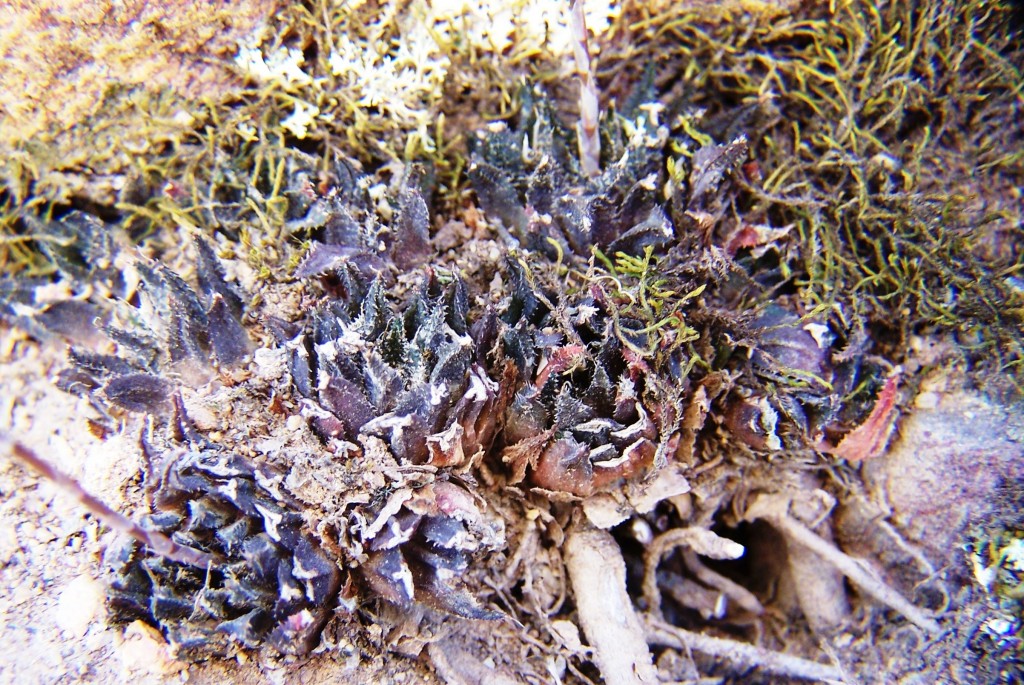
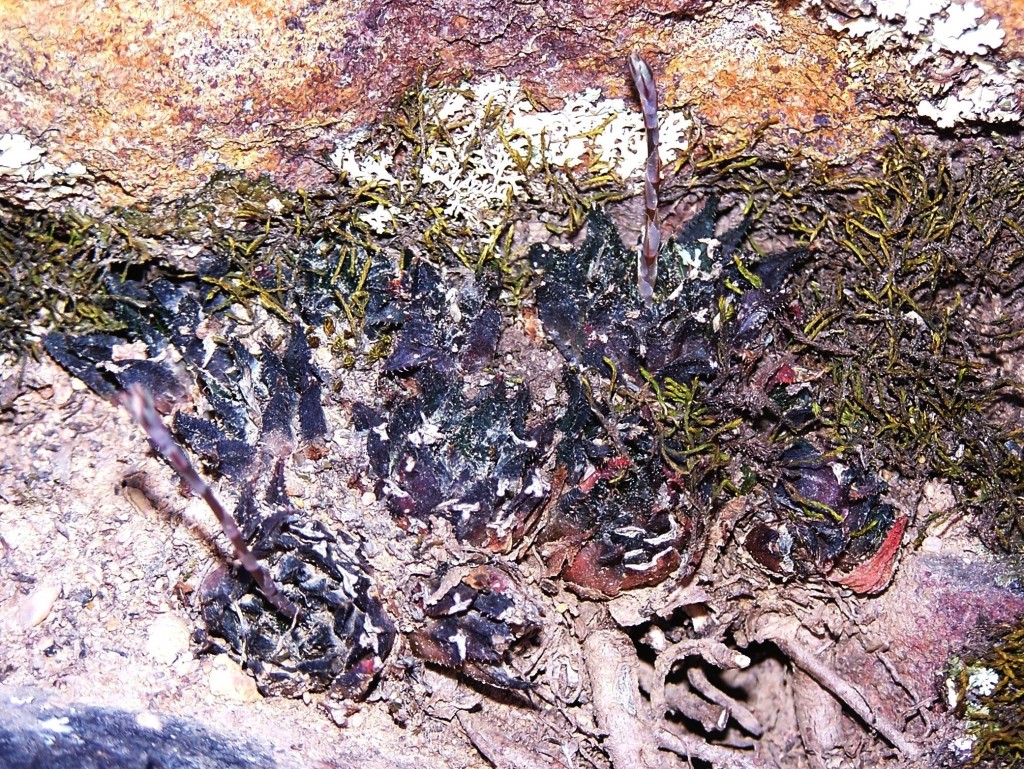
The curious thing for me was that I had no doubt up to this moment that the plants were H. maraisii confirmed by the dark grey-green colouration of fig 1. So you may not imagine my surprise when the first cluster I saw was a very green plant with many spreading leaves and notable end-surface translucence viz. H. heidelbergensis (figs. 3a & b). I also had a memory of plants rather as I have written about near Robertson, which are pubescens-like with surface fuzz (see fig. 4a, b & c). The plants do indeed have surface fuzz and also the plants figured are solitary and with incurving leaves.
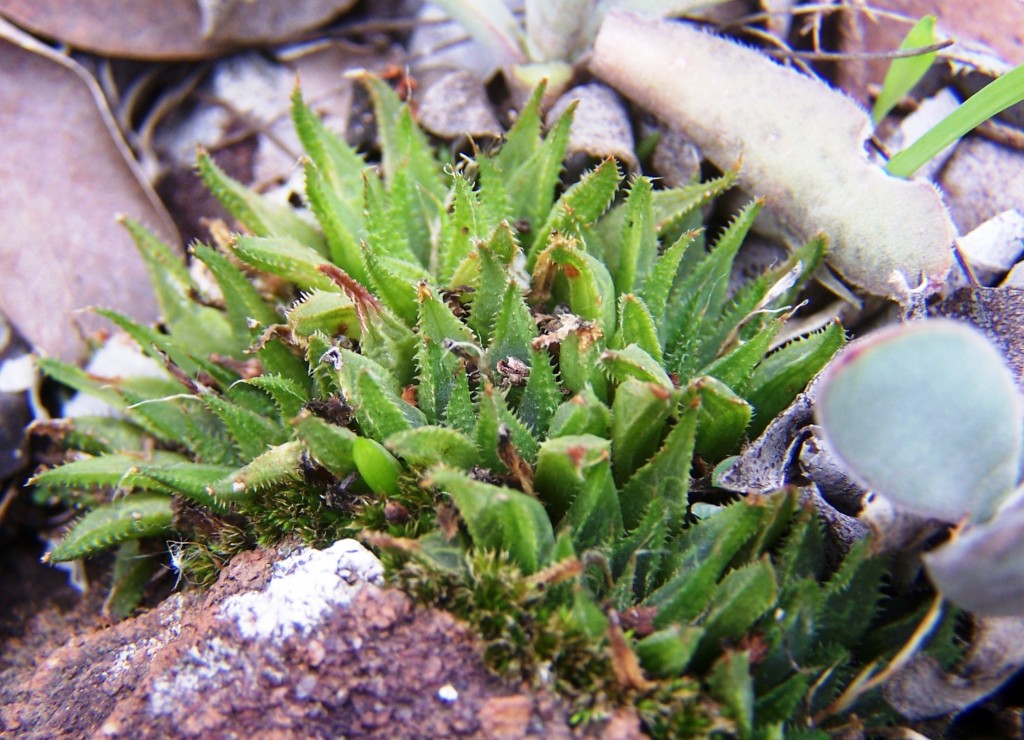
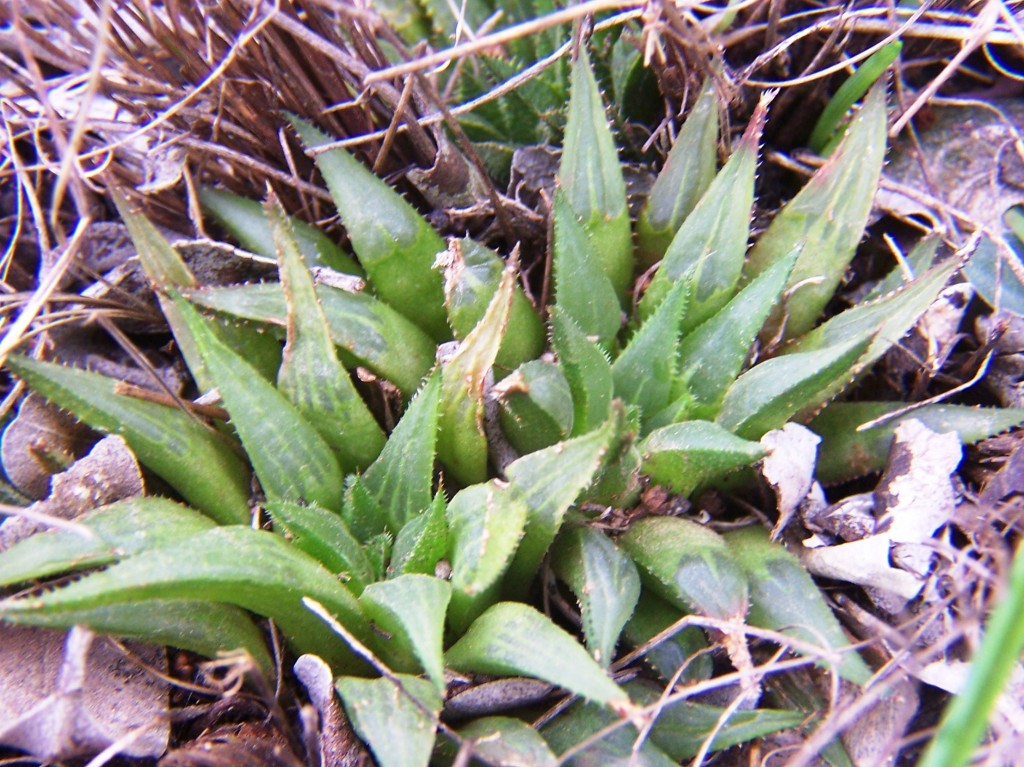
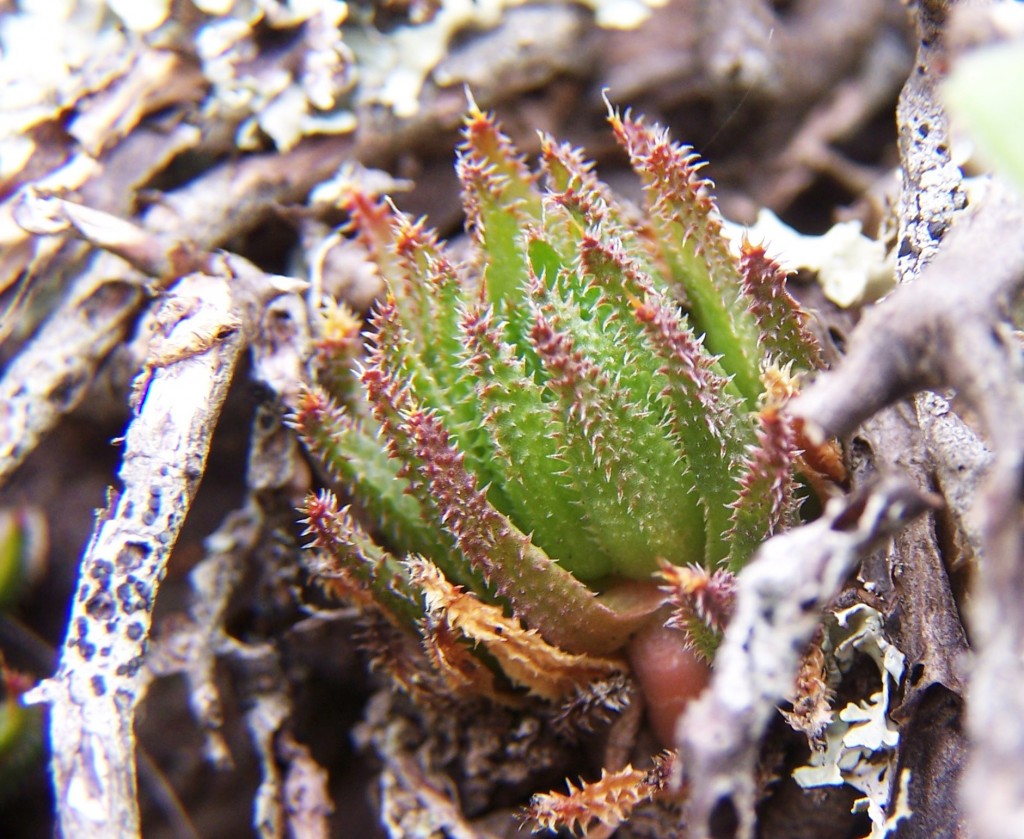


Fig. 5 illustrates a plant which has the more rigid and less translucent leaves of H. maraisii, and figs 6a, b and c are of similar solitary plants. Figs. 7a & b are clustering clones. The plants are all small with the rosettes seldom more than 30mm diam., although the spread of leaves of a clone as in 3b may be as much as 70mm. The flower stalks bore few flowers and one is illustrated in Fig. 8 although I have been able to make little use of flowers in drawing any conclusions.
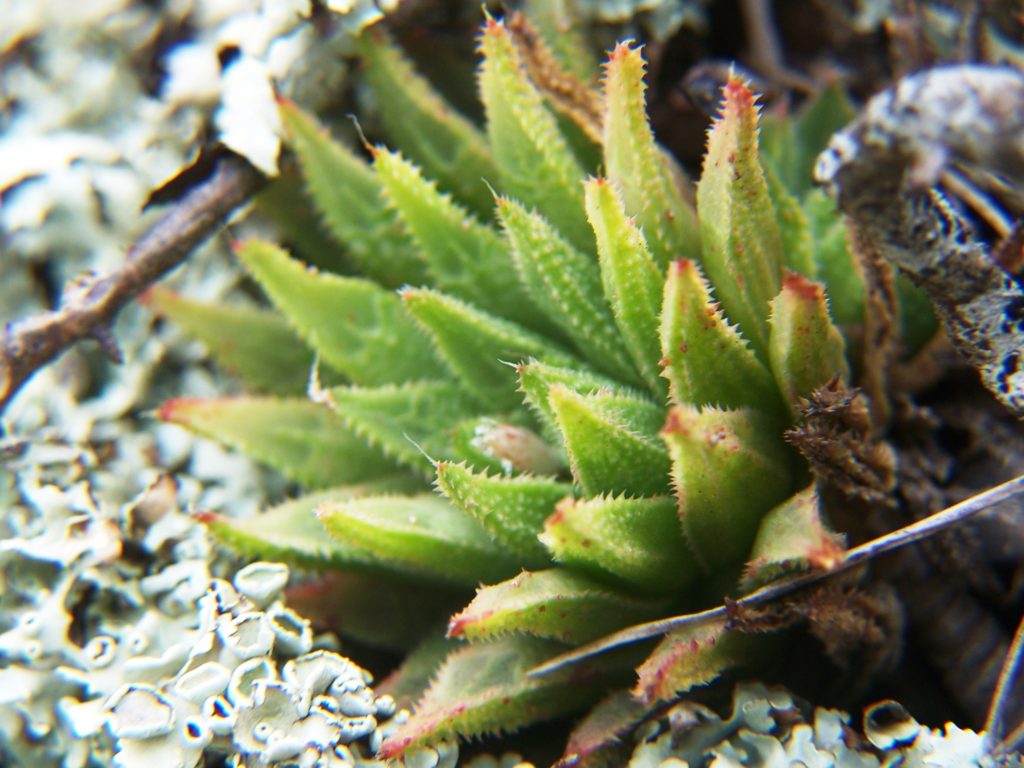
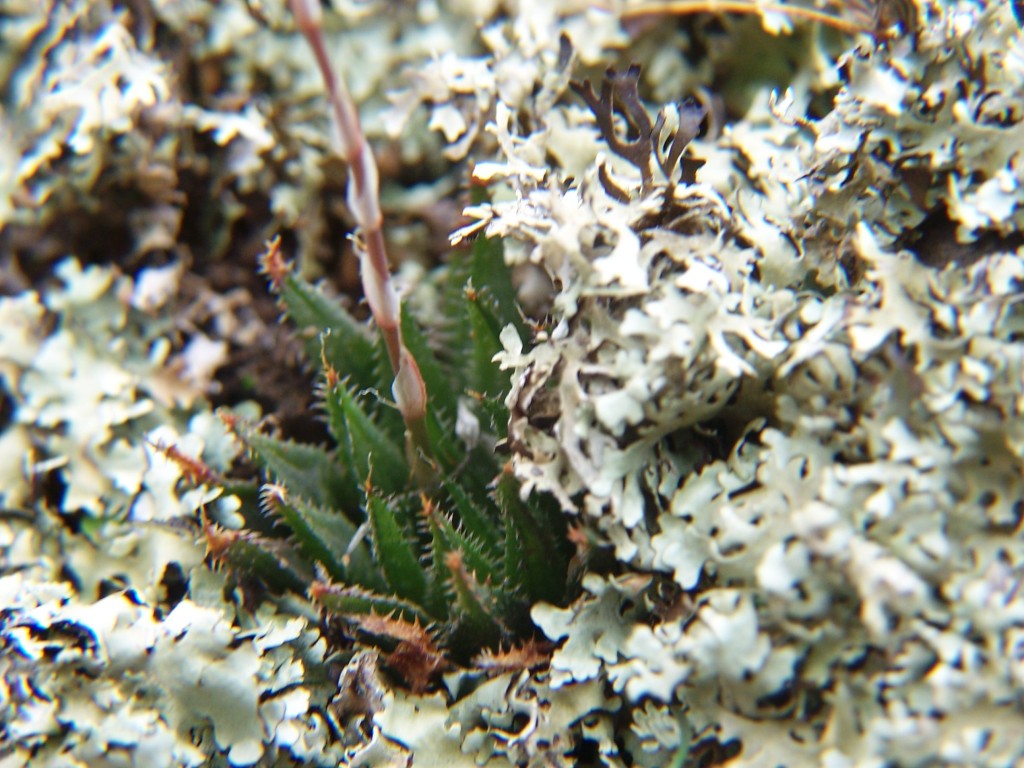
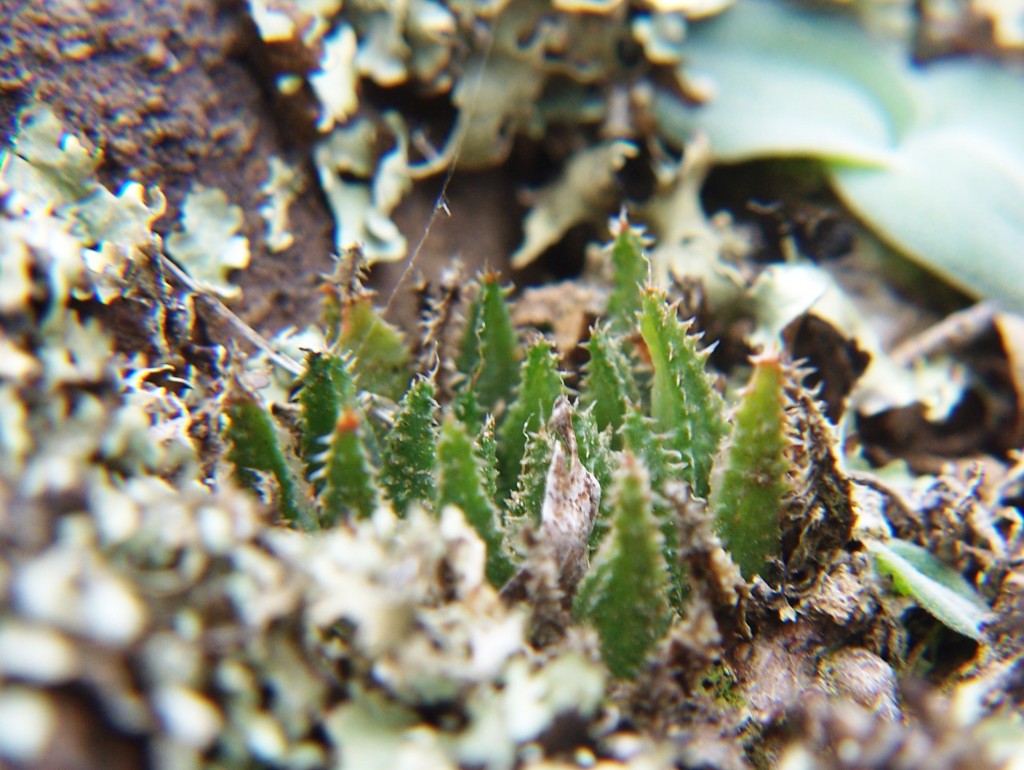

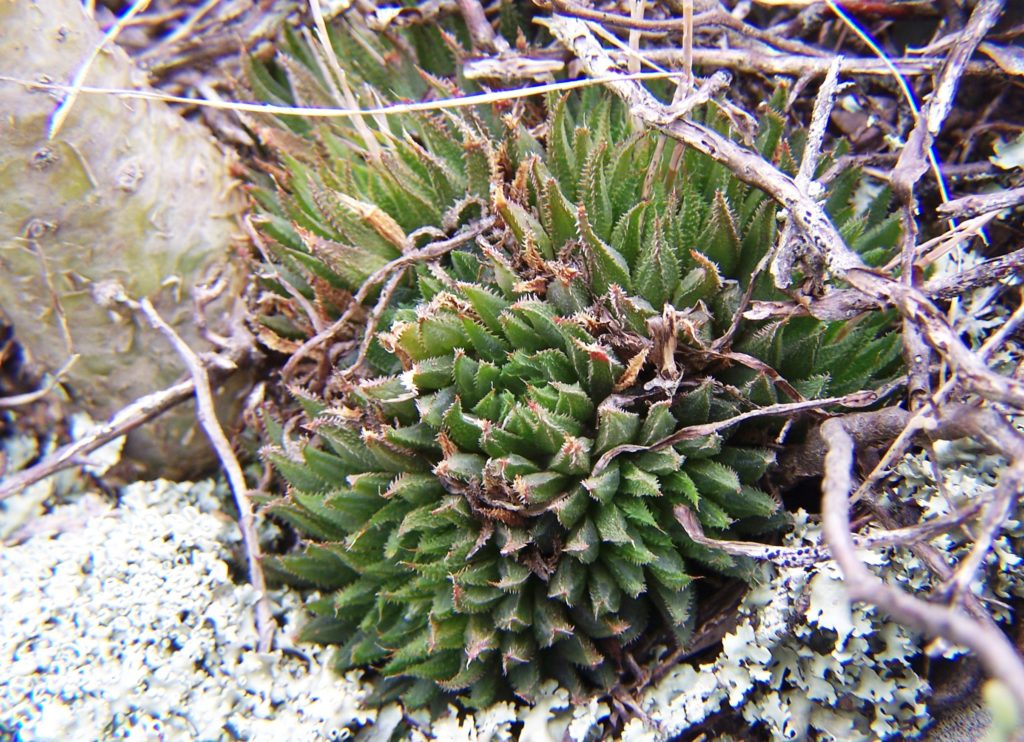


The habitat is a curious mixture of plant species. There are milkwood trees which can grow large, as well as Acacia karoo the common sweet thorn and Lycium which is also a medium sized spiny shrub. These are often along watercourses and here the Riviersonderend is barely 50m distant. But there are also Renosterveld species such as renosterbos itself, and karoid plants. The large conglomerate boulders are pocked with missing tennisball size stones, so that the dense lichen cover has many niches for plants. Apart from miniatures like Schizobasis, Holothrix, and Drimia pusilla there are also miniaturized Crassula, Adromischus and many tiny seedlings of the large Tylecodon paniculata. My observation is that the vegetation of many such sites bears very little relation to vegetation maps and plant associations mapped at large scales.
The site is fairly disturbed as Bluegum and Black wattle are invasive along the river. The farm itself was controversially planted to Redriver Gum and Pinus pinaster and planted gums impinge so closely on that site that Haworthia can be found in the stone and moss among the closest planted trees. The greater area is very marginal for farming on very rocky soil marginal to the sandstones of the higher mountains so that forestry option seems a very unpromising and unfortunate one. A larger similar rocky area to the northeast has been, and is scheduled to be mined again, for manganese. There is nothing to suggest that the Haworthia ever occurred there. Looking north across the river to the Bokkeveld shales one again sees the virtual ecological desert of total cultivation. Very few habitats are apparent. It is often speculated that many plants (particularly specialists like Haworthia) must have perished due to this cultivation. But my impression, based on the known collecting record of the last 80 years as well as on my own experience of where the plants occur, is to think it actually very unlikely that plants did occur where they presently are not. I followed up some records made in late 1930 by messrs. Otzen, Luckhoff, Herre and Malherbe and am confident that plants can still be found at most of their sites. Similarly the localities recorded by Dekenah and Smith are similarly still extant although they must be seen as under threat. What does cause concern is that the lost habitats are largely small rocky sites with surface rock that are targeted by road builders. Road maintenance has become a major problem because the road reserves which used to form uncultivated strips of natural vegetation are now cleared fence to fence in the case of new roads. In the case of existing and minor roads there is a constant attack by road clearing gangs, fire and weedkiller spraying. In the agricultural areas there are huge expanses I see as ecological deserts. The rocky and skeletal habitats are under severe pressure from animals and the introduction of new sheep breeds with more aggressive feeding habitats is a severe threat to these small islands. Farming has also become more of an industry and business and production is the goal irrespective of conservation ideals. This particular habitat seems to be as safe as it can possibly be by virtue of its intrinsic nature and in respect of the above threats.
Conclusion
The distinction between H. maraisii and H. heidelbergensis is too tenuous to enable positive identifications and this Klippoort population displays more obviously the problem of variability within populations.
Acknowledgement
Messrs. Leanne & Pieter Urschel, Klippoort East.
Messrs. Cindy and Jon Webber, Klippoort West.
♦
